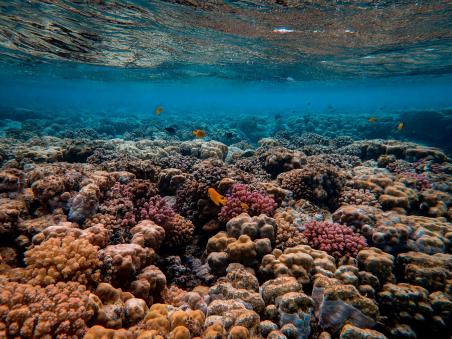
As climate change accelerates, tropical storms are becoming more frequent and intense. Rising ocean temperatures and shifting weather patterns are fueling stronger cyclones and hurricanes, placing millions of people living in coastal areas at increasing risk. But amid this challenge, nature offers a powerful line of defense: coastal ecosystems.
Mangroves, salt marshes, coral reefs, and other coastal habitats do more than support biodiversity. They act as buffers, absorbing energy from storms, reducing flooding, and protecting communities. These natural systems could provide sustainable solutions to a growing global threat.
Mangroves: Storm Shields with Deep Roots
Mangrove forests thrive in tropical and subtropical coastal zones and are among the most effective ecosystems at reducing storm impacts. Their dense root systems not only provide protection and breeding grounds for aquatic life, but slow water flow, trap sediment, and reduce wave energy.
Mangroves protect more than 18 million people globally from coastal flooding. Communities shielded by mangroves experience significantly fewer fatalities and less infrastructural damage from tropical storms compared to those without such protection. During Cyclone Amphan in 2020, the Sundarbans mangrove forest in India and Bangladesh absorbed much of the storm’s force, shielding inland populations.
Beyond storm protection, mangroves sequester large amounts of carbon, making them critical in the fight against climate change.
Salt Marshes: Silent Flood Barriers
Salt marshes are coastal wetlands found in temperate regions, and though they may seem unassuming, their value during storms is immense. These grassy ecosystems absorb floodwaters and stabilise shorelines.
During Hurricane Sandy (2012) in the United States, salt marshes reduced property damage by more than 25%. Without these wetlands, an estimated $625 more in damages would have occurred in the states of New Jersey and New York alone.
Salt marshes also act as carbon sinks and improve water quality, offering multiple layers of protection and resilience.
Coral Reefs: Natural Wave Breakers
Coral reefs form a vibrant barrier along many tropical coastlines. These complex ecosystems are not just home to dazzling marine life, but also serve as underwater breakwaters. When waves from tropical storms or hurricanes move toward the shore, reefs absorb much of their energy before it reaches land. This natural wave buffering reduces the height and force of storm surges, helping to prevent flooding and coastal erosion.
Coral reefs can reduce wave energy by as much as 97%. This protection has been shown to make a significant difference, in island nations such as the Philippines, where typhoons regularly strike; reefs are estimated to present over $1.5 billion in flood damage per annum. Without them, coastal communities would face far greater risk during extreme storms.
Unfortunately, reefs are also on the front lines of climate change. Warming waters and ocean acidification are causing widespread coral bleaching. Protecting reefs through conservation, pollution control, and sustainable development practices is essential for maintaining their role as natural storm buffers and biodiversity hotspots.
A Cost-Effective Solution
Unlike hard infrastructure such as seawalls, which can be incredibly expensive to build and maintain, natural ecosystems provide storm protection while supporting fisheries, tourism, and biodiversity. Unsurprisingly, nature-based solutions are increasingly recognized as vital tools in climate adaptation strategies in Mexico, Vietnam, Indonesia, the United States, and other countries at risk from coastal flooding and tropical storm surges.
Investing in Nature for Climate Resilience
As the climate crisis continues to intensify, the need to protect and restore coastal ecosystems has never been greater. These ecosystems are not just wildlife habitats; they are life-saving natural infrastructure. Businesses, governments, international organizations, and civil society must prioritize ecosystem-based adaptation as part of broader climate resilience efforts.
Preserving mangroves, salt marshes, and coral reefs is not only an environmental imperative but also a practical solution that can save lives and reduce the financial burden of climate disasters. In a world that will face more powerful storms, nature remains one of our strongest allies.






